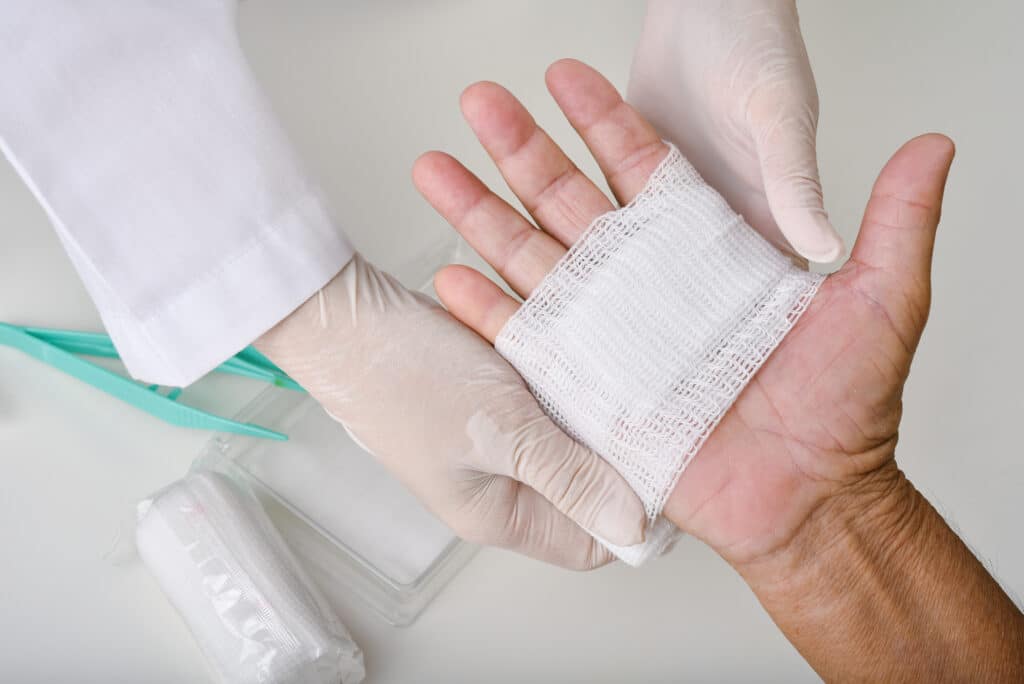In the evolving field of wound care, advanced dressings like hydrogel and collagen have significantly influenced treatment strategies for various types of wounds. These innovative dressings maintain optimal moisture levels at the wound site and accelerate the healing process, transforming patient outcomes and care standards.
Understanding Hydrogel Dressings
Properties and Mechanism
Hydrogel dressings are known for their moisture-retaining capabilities, which make them an excellent choice for dry or mildly exuding wounds. Composed primarily of water in a gel base, these dressings provide a moist healing environment that can help facilitate the natural wound healing processes. The gel composition is soothing upon application, offering a cooling effect that significantly reduces pain and discomfort at the wound site.
Benefits and Uses
Hydrogel dressings are particularly beneficial for:
- Burns: They soothe burns by maintaining moisture and allowing heat to dissipate from the wound, promoting faster healing.
- Necrotic Wounds: The moist environment helps in autolytic debridement (the body’s natural process of getting rid of dead tissue), which is crucial for the healing of these wounds.
- Radiation Damage: Hydrogel dressings can help manage dry, peeling skin or open wounds caused by radiation therapies.
The Role of Collagen Dressings
Composition and Healing Support
Collagen dressings, derived from naturally occurring proteins, are designed to promote the deposition and organization of newly formed collagen in the wound bed. They are effective because they mimic the body’s natural collagen structure, providing a scaffold that encourages cell migration and proliferation.
Advantages in Wound Care
Collagen dressings are particularly effective in managing:
- Chronic Wounds: They can jumpstart the healing in wounds where natural healing has stalled, such as in diabetic ulcers or venous insufficiency ulcers.
- Pressure Ulcers: By supporting tissue regeneration and maintaining a natural healing environment, collagen dressings help in the management of pressure ulcers, promoting faster healing and reducing the risk of infection.
Comparative Applications
The choice between hydrogel and collagen dressings depends largely on the wound’s characteristics and the specific needs of the healing environment:
- Exudate Management: Hydrogel is preferred for dry or lightly exuding wounds, whereas collagen can be used across a broader spectrum, including moderately exuding wounds.
- Tissue Regeneration: Collagen dressings are superior when it comes to facilitating new tissue growth, making them ideal for wounds needing substantial tissue repair.
- Ease of Use: Hydrogel dressings are generally easier to apply and manage, especially in wounds at difficult-to-dress locations.
Integrating Advanced Dressings into Wound Care
Patient Assessment
Before choosing a dressing, a thorough assessment of the wound and the patient’s overall health status is necessary. Factors such as wound depth, presence of infection, and exudate level should guide the selection of an appropriate dressing type.
Monitoring and Adjustment
Continuous monitoring of the wound’s response to the selected dressing is crucial. Adjustments may be needed based on the healing progress or any signs of adverse reactions, such as increased pain or signs of infection.
Both hydrogel and collagen dressings are indispensable in modern wound care, each playing a distinct role in enhancing healing outcomes and improving patient comfort. The choice of dressing should be tailored to each wound’s specific needs, based on a comprehensive understanding of the product properties and the wound’s characteristics. With the right approach, these advanced wound care products can significantly improve the quality of life for patients dealing with various types of wounds.
Keep an eye for more latest news & updates on Discover Tribune!




